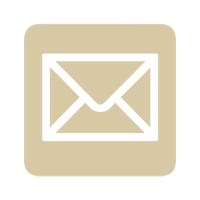“The most approved means of accomplishing result [is] the use of electricity.”
A.P. Peck, M.D. to Lavinia Goodell, June 7, 1877
In the spring of 1877, Lavinia Goodell could no longer ignore her growing ovarian tumor, and she sought medical advice from a variety of sources. She corresponded with a physician in Chicago. She considered travelling to Michigan, where her sister was living, to consult with a mysterious German woman who claimed to have healing powers. And she had a rather extensive correspondence with Racine physician A.P. Peck, who treated tumors through the use of electricity.

Dr. Peck was born in Racine in 1848 and was a Civil War veteran. He graduated from medical school in Chicago. In the early 1870s he invented a device called the New Combined Switch & Electrode, which was a component of the Electro-Thermal Bath. (Dr. Peck’s treatment regimen sounds somewhat similar to one of the cures offered by Dr. Hanson, from whom Lavinia sought treatment shortly before her death in 1880. Dr. John Harvey Kellogg, today best known for his cereals, had a similar device at his Battle Creek, Michigan sanitarium.) According to an article in the Racine Journal, the electrode could be attached to an ordinary wooden bath tub:
By turning the knob at the top of the tub each electrode can be made positive, negative, or entirely disconnected. In this way a current can be directed through any part of the tub, and each electrode is mounted on a base which can be attached to the tub…. Every physician may set up the apparatus for himself and [have] the benefit of this Powerful Therapeutic Remedy.

Lavinia seems to have first learned of Dr. Peck through her good friend Mrs. Beale. A Racine temperance society member named Mrs. Sage wrote to Mrs. Beale in April of 1877 recommending that Lavinia consult with Dr. Peck. Mrs. Beale must have shown the letter to Lavinia, since she immediately wrote to Mrs. Sage, who responded on April 23. Mrs. Sage reported that she had an acquaintance whose ovarian tumor Dr. Peck had treated with electricity, apparently with good results. Mrs. Sage said she had consulted with Dr. Peck about Lavinia’s case, and he explained the nature of the treatment as “the use of the galvanic current of electricity to decompose the nature of the fluid, by introduction of needles into the sac, and forcing the current between them.”
Lavinia ultimately opted for a different sort of treatment. On May 18, 1877, her diary entry reads, “Drs. Chittenden, Judd and Sutherland came and tapped my tumor, letting out 16 1/2 pounds of villainous dark stuff–Didn’t know there was so much vileness in me before — hope my innate depravity is all removed — and that I shall be better some in body and mind.”
Sadly, almost immediately after the fluid was drained, Lavinia could feel that it was accumulating again. She must have written to Mrs. Sage who, in turn, again contacted Dr. Peck. On June 7, 1877, Dr. Peck wrote Lavinia directly. He said:
You have done wisely in preferring the operation of tapping to any other but the chance of preventing the reaccumulation of the fluid … is very small, next to impossible.
The most approved means of accomplishing result are medicated applications and use of electricity…. There is no mystery about it. We use it with just as definite a purpose as the knife or any other surgical means and it could be used with good effect in your case…. I have invented an apparatus by which I withdraw the fluid by pneumatic aspiration and, by reversing its action, inject into the tumor any desired medicated solution without withdrawing the cannula and what is very important without admitting air.
I believe that with … the use of electricity and pneumatic aspiration and injection … few, if any, cases would finally be obliged to resort to an extreme surgical operation with its greatly increased risk to life. The treatment could be used without interfering greatly with your business.
Lavinia must have replied to Dr. Peck and inquired about the feasibility of having iodine injected into the tumor. Dr. Peck wrote back on July 1 and discouraged that practice, saying while iodine was useful in some cases, in her case it was “extremely problematical.” He again touted the benefits of his pneumatic aspiration and injection process, saying, “Our improved apparatus for withdrawing and injecting fluid renders the operation much easier and safer than when it was first used.” He also said this process “offers a safe middle course which can be supplemented at any time by the severe operative procedure if necessary.”
After a great deal of consideration and consultation with other physicians, Lavinia decided not to try any sort of experimental treatment. Instead, in the spring of 1878, she travelled to the east coast and had her tumor removed in a lengthy and dangerous surgical procedure.
In 1880, Dr. Peck accepted an appointment from the American Board of Commissioners for Foreign Missions, and spent more than twenty years in northern China as a missionary physician. He died in 1923.
Sources consulted: Lavinia Goodell’s 1877 diary; H.M. Sage letter to Mrs. D. A. Beale (April 17, 1877); H.M. Sage letter to Lavinia Goodell (April 23, 1877); A. P. Peck’s letters to Lavinia Goodell (June 7, 1877, July 1, 1877); Racine Journal (Nov. 26, 1873; April 28, 1880); Oakland Tribune (June 17, 1923); George M. Schweig, M.D., The Electric Bath: Its Medical Uses, Effects, and Appliances (G.P. Putnam’s Sons, 1877).








So terribly sad to face illness so young. Even now the treatments for the multitudes of cancer seem to be somewhat guessing.